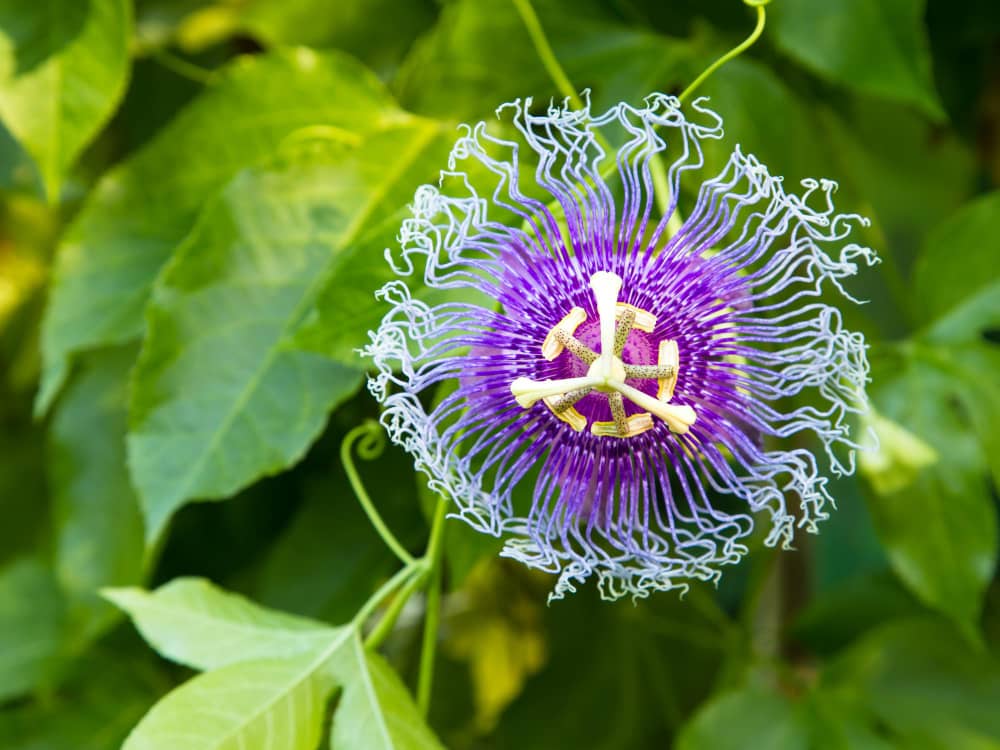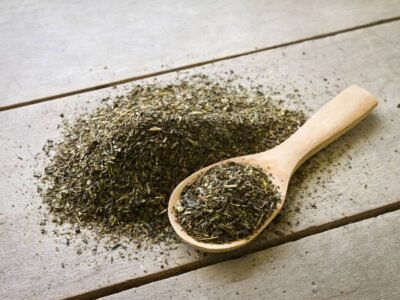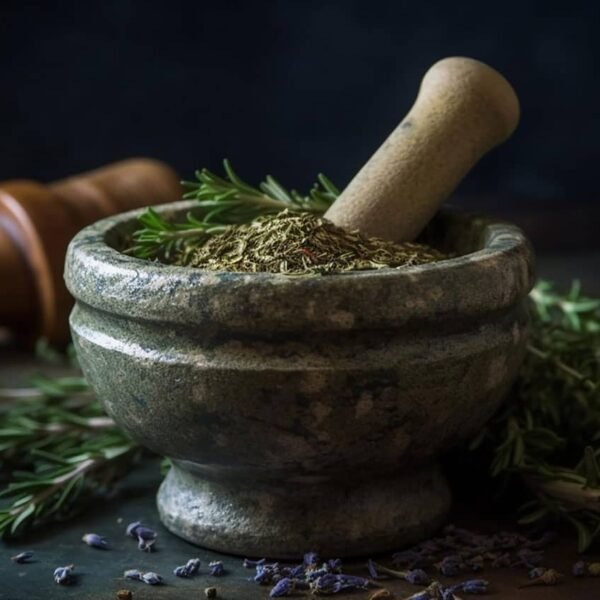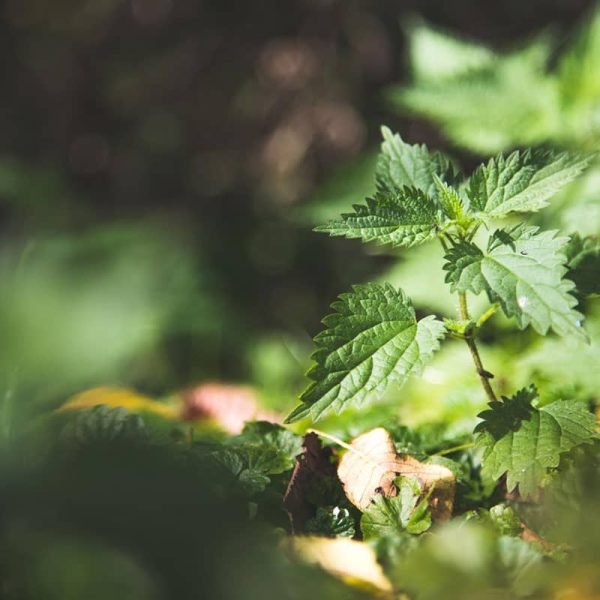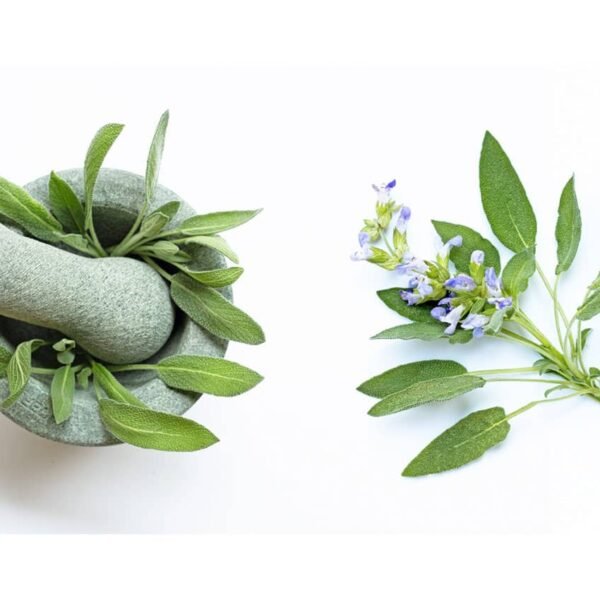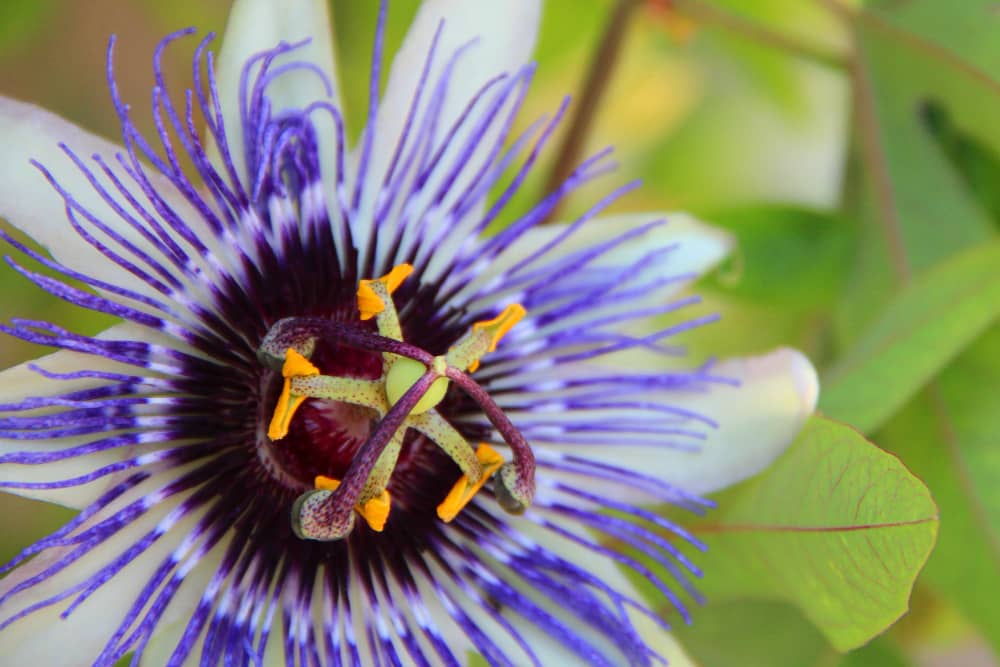
What is passionflower?
Passionflower (Passiflora incarnata) is a vine whose leaves and flowers are commonly used to make herbal teas and supplements. Passionflower is native to the southeastern United States and Central America, but it is now grown in many other parts of the world.
Passionflower tea is brewed using only the leaves and flowers of the plant. The leaves are usually dried before being used. Passionflower tea has a mild sedative effect and is sometimes used to treat anxiety and insomnia.
Passionflower supplements are made from extracts of the plant’s leaves and flowers. Passionflower supplements are sometimes used to treat anxiety and sleep disorders.
Passionflower is generally safe to consume, but some people may experience side effects such as headache, dizziness, or nausea. Passionflower should not be consumed by pregnant or breastfeeding women.
The history of passionflower
Passionflower (Passiflora incarnata) is a vine native to the southeastern United States. It has been used as a medicinal herb by Native Americans for centuries, and was first introduced to European settlers in the early 1600s. Passionflower was traditionally used to treat anxiety, insomnia, and other nervous disorders.
Passionflower fell out of favor with conventional medicine in the mid-1900s, but has experienced a resurgence in recent years due to its effectiveness in treating anxiety and other conditions. Passionflower is now available in many forms, including capsules, tablets, tinctures, and tea.
Passionflower is generally considered safe, but may cause drowsiness or dizziness. It should not be used during pregnancy or breastfeeding. People with heart conditions, high blood pressure, or kidney disease should use passionflower with caution.
How to grow passionflower
Passionflower (Passiflora incarnata) is a fast-growing, perennial vine that produces beautiful flowers. It is native to the southeastern United States, but can be grown in any region with a long growing season. Passionflower is an easy plant to grow and care for, and it is relatively pest and disease resistant. With proper care, it will bloom profusely from late spring through early fall.
Passionflower prefers a sunny location with well-drained soil. It will tolerate partial shade, but may not bloom as heavily. Passionflower can be planted in the ground or in a large container. If you are growing it in a container, choose one that is at least 18 inches wide and deep. Passionflower can be propagated by seed, cuttings, or division. To propagate by seed, sow the seeds in a sterile medium such as perlite or vermiculite.
Keep the medium moist but not wet and place it in a warm location until the seeds germinate, which usually takes about two weeks. Once the seedlings have emerged, transplant them into individual pots filled with a well-drained potting mix. To propagate by cuttings, take 4-6 inch stem cuttings from new growth in late spring or early summer. Remove the lower leaves and dip the cut end in rooting hormone powder.
Plant the cuttings in a sterile medium such as perlite or vermiculite and keep the medium moist but not wet. Place the cutting in a warm location until new growth appears, which usually takes 4-6 weeks. Once the new growth appears, transplant the cuttings into individual pots filled with a well-drained potting mix. Passionflower can also be propagated by division.
Dig up an established plant in early spring and carefully divide it into 2-3 sections using a sharp knife or spade. Replant each section in a prepared bed or container filled with well-drained soil or potting mix. Water deeply and mulch around the base of the plant to help retain moisture. Once your passionflower plants are established, they need very little care other than regular watering and occasional fertilizing.
Water passionflower plants weekly, giving them enough water to soak down to the roots but allowing the soil to dry out somewhat between waterings. Fertilize monthly during the growing season using a balanced fertilizer such as 10-10-10. Passionflower vines are heavy feeders and will benefit from being fertilized more often if they are grown in poor quality soil.
Pruning is not necessary except to remove dead or damaged growth or to control the size of the plant if it is getting too large for its space. To do this, simply cut back Passionflower vines to 12-18 inches after they have finished blooming in late summer or early fall.

How to use passionflower
If you’re looking for a natural way to ease anxiety, insomnia, pain, or any of a variety of other conditions, you may want to try passionflower. Passionflower is a herb that has been used for centuries to treat a variety of conditions. Today, it is commonly taken as a supplement or tea. Passionflower is thought to work by increasing levels of a chemical called gamma aminobutyric acid (GABA) in the brain. GABA is a neurotransmitter that helps regulate nerve activity.
Passionflower is also used as an anti-inflammatory and for pain relief. You can find passionflower supplements and teas at most health food stores. If you decide to take passionflower supplements, be sure to follow the instructions on the package. When taking passionflower tea, steep one teaspoon of dried herb in eight ounces of boiling water for 10 minutes.
You can drink passionflower tea up to three times per day. If you’re pregnant or breastfeeding, it’s best to avoid passionflower. There is not enough research on its safety during pregnancy and lactation. Passionflower may also interact with certain medications, so be sure to talk to your healthcare provider before taking it if you are on any medications.
Passionflower recipes
Passionflower Tea: Passionflower tea is a simple and delicious way to enjoy the benefits of this herb. To make a cup of tea, simply steep 1-2 teaspoons of dried passionflower in a cup of hot water for 5-10 minutes.
Passionflower Syrup: Passionflower syrup is a great way to add a unique flavor to cocktails or mocktails. To make syrup, combine 1 part dried passionflower with 2 parts sugar and 1 part water in a saucepan. Heat the mixture over low heat, stirring until the sugar has dissolved. Once the syrup has cooled, it can be stored in a jar or bottle in the refrigerator for up to 2 months.
Passionflower Dessert: For a truly decadent dessert, try making passionflower crepes. Combine 1 cup of flour, 2 eggs, 1/2 cup milk, 1 tablespoon sugar, and 1 teaspoon dried passionflower in a blender or food processor and blend until the mixture is smooth.
Place a sheet of wax paper or plastic wrap on a work surface and spoon the crepe batter onto the sheet, using about 1/4 cup of batter for each crepe. Spread the batter out into a thin circle and then let it sit for 5 minutes so that it will be firm enough to flip. Cook the crepes in a nonstick skillet over medium heat for about 2 minutes per side, or until they are golden brown. Serve the crepes with fresh fruit and whipped cream, and enjoy!
The benefits of passionflower
Passionflower (Passiflora incarnata) is a climbing vine with beautiful flowers that have been used for centuries in traditional medicine. The plant is native to the tropical and sub-tropical regions of Central and South America, but can now be found all over the world. Passionflower has a long history of use as an herbal remedy for anxiety and insomnia.
Some studies have shown that passionflower can be as effective as medication for treating generalized anxiety disorder (GAD). A 2010 study found that passionflower was just as effective as the medication oxazepam in reducing symptoms of GAD. Passionflower has also been shown to be effective in treating other forms of anxiety, such as post-traumatic stress disorder (PTSD).
Passionflower is also a popular remedy for insomnia. A 2009 study found that passionflower was effective in improving sleep quality in people with chronic insomnia. Passionflower has also been traditionally used to treat menopausal symptoms, such as hot flashes and night sweats.
Passionflower is generally considered safe when taken in small amounts. However, it can cause some side effects, such as dizziness, nausea, and vomiting. It is also important to note that passionflower can interact with certain medications, such as blood thinners and sedatives. If you are taking any medications, it is important to speak to your doctor before taking passionflower.
Final Words
Passionflower is an incredibly versatile and beautiful plant that has a long history of use in traditional medicine. Today, passionflower is still used to treat a variety of conditions, including anxiety, insomnia, and pain. Growing passionflower is relatively easy, and the plant can be used in many different ways, including in teas, tinctures, and topical preparations. If you’re looking for a natural way to improve your health and wellbeing, passionflower is definitely worth considering!

